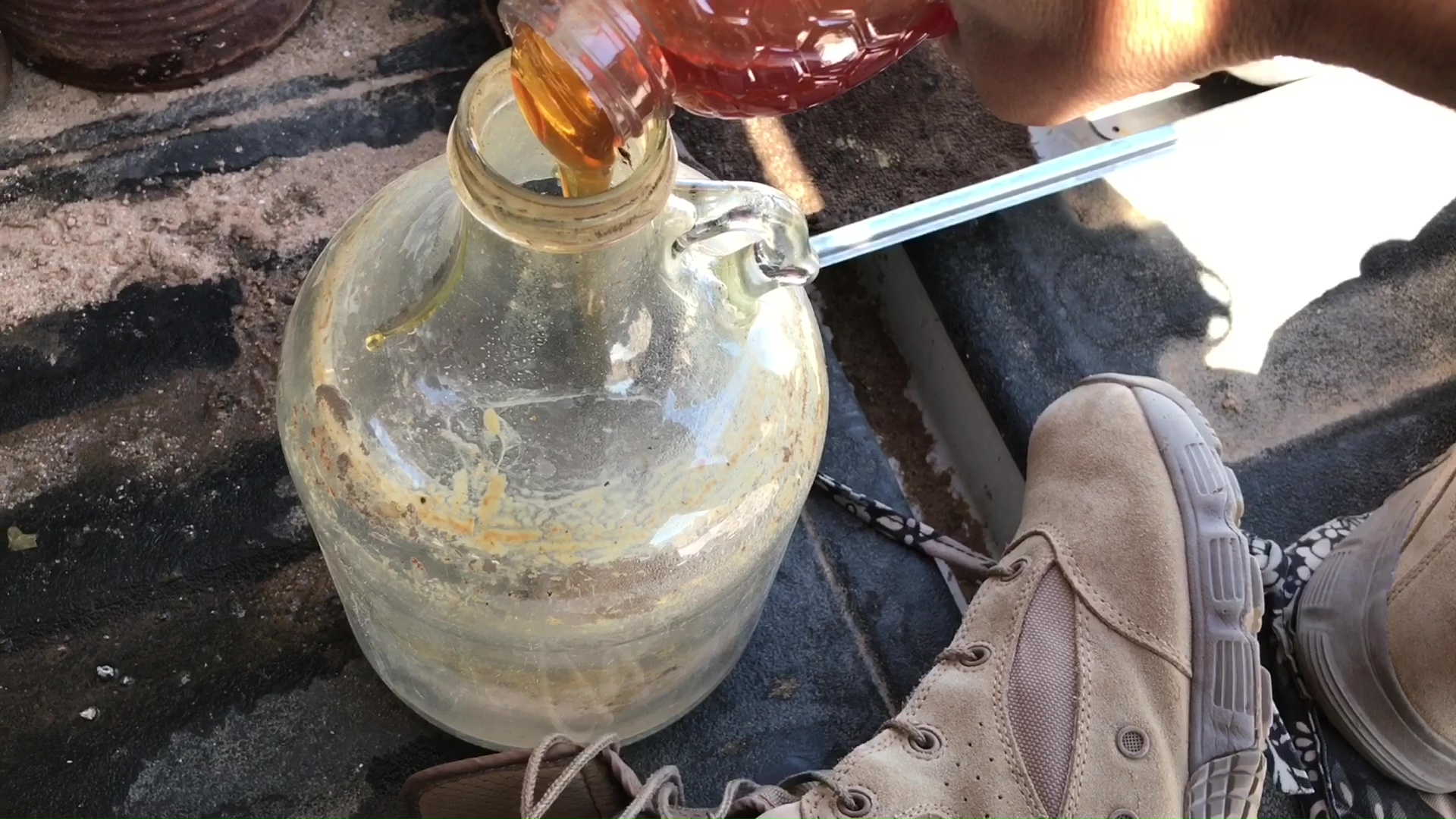
01 Pouring Honey In Wine Mead Fermentation Jug
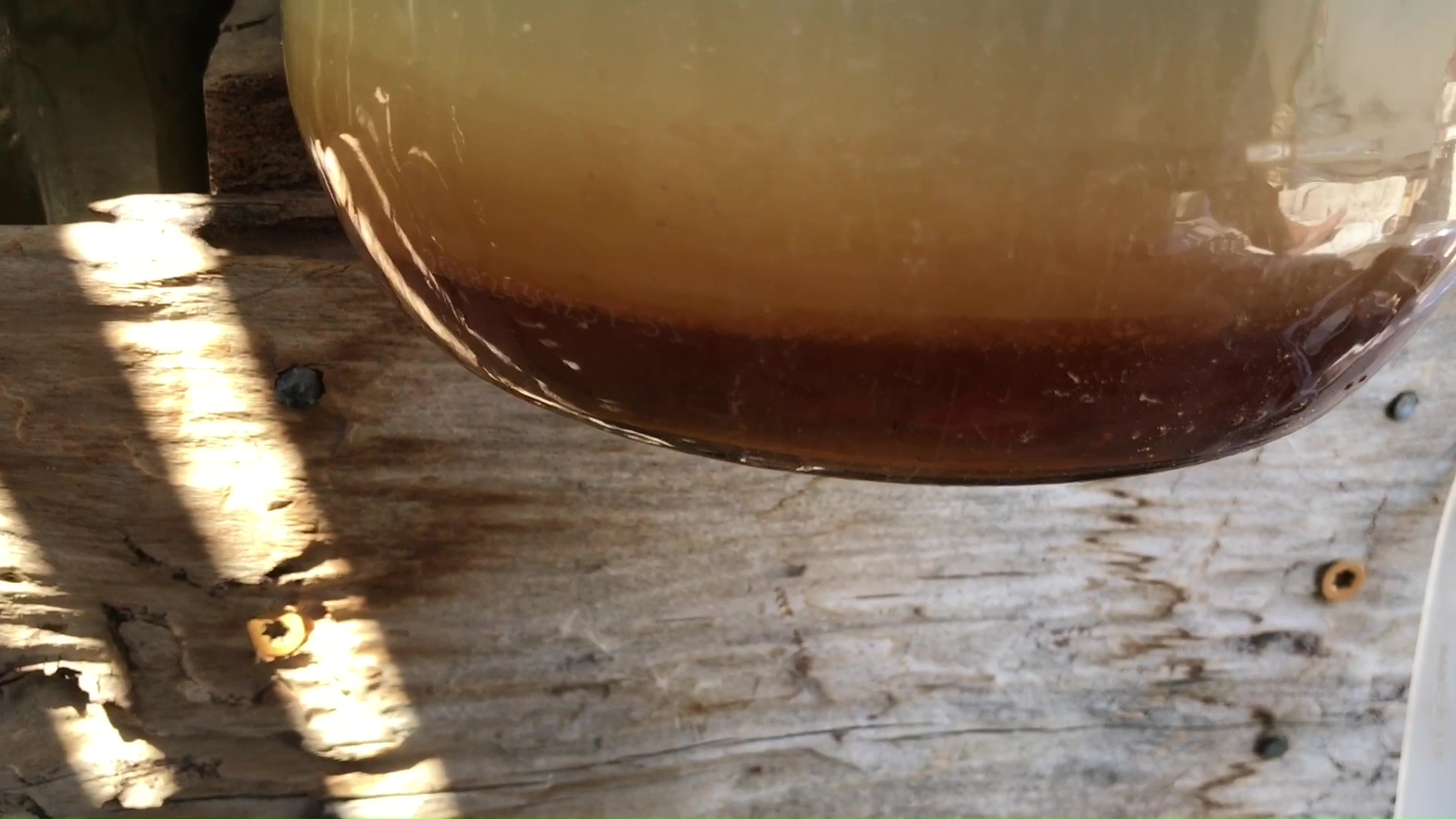
02 Honey Layer At Base Of Fermentation Jug
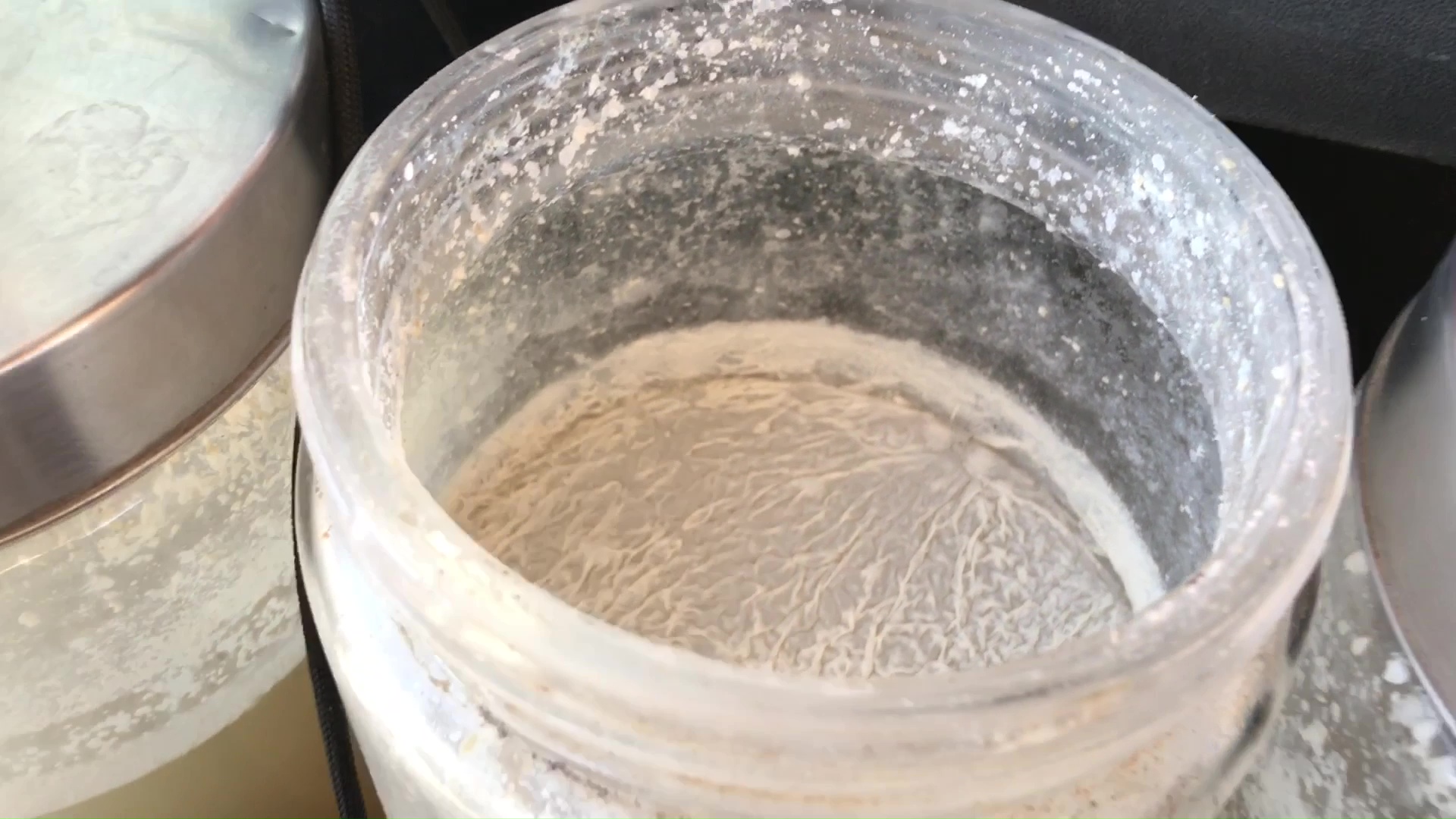
03 Rice Wine Jar Floating Yeast Layer
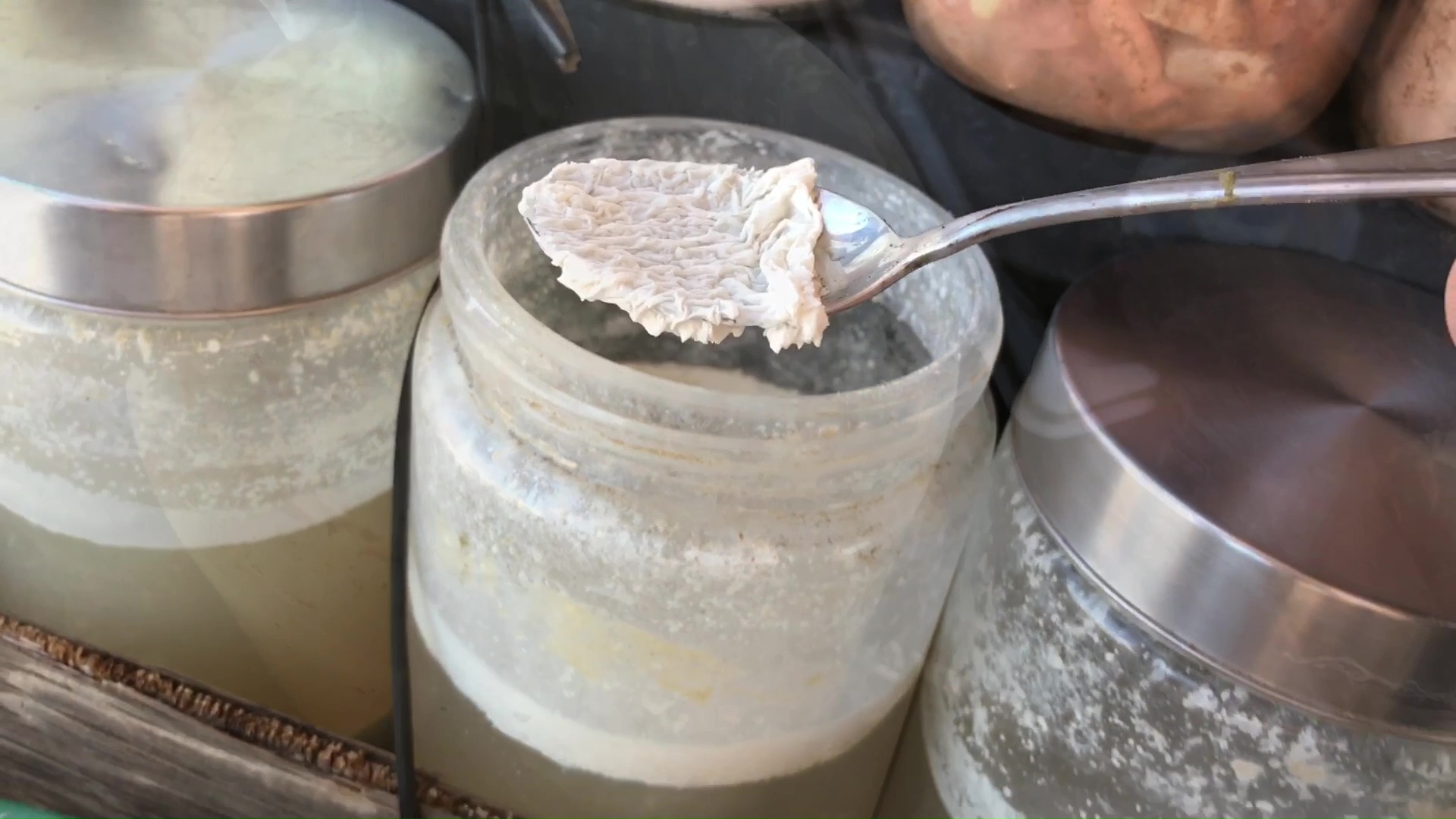
04 Scooping Rice Wine Yeast From Fermentation Jar
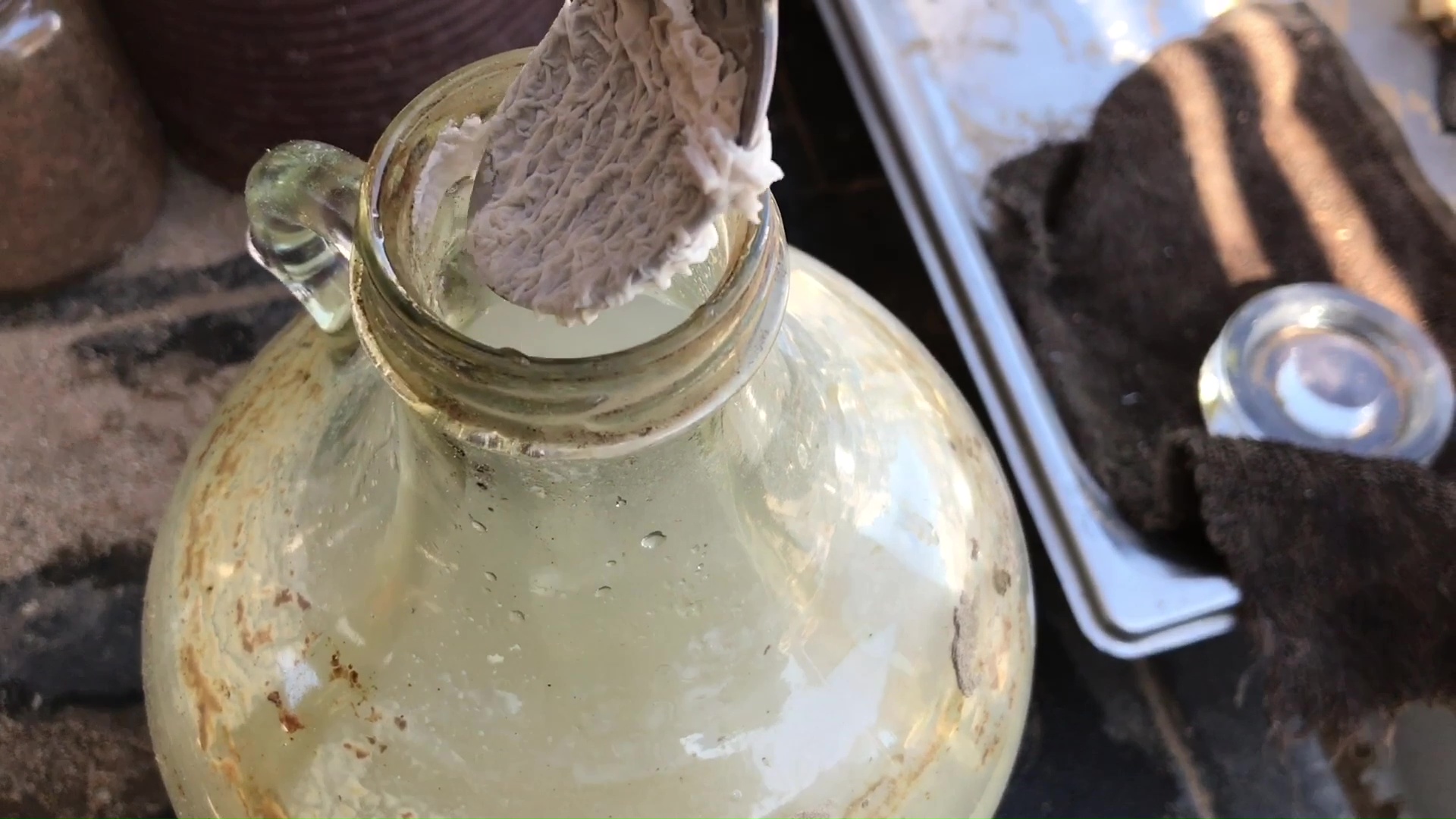
05 Transferring Rice Wine Yeast Starter Culture To Honey Mead Wine Jug
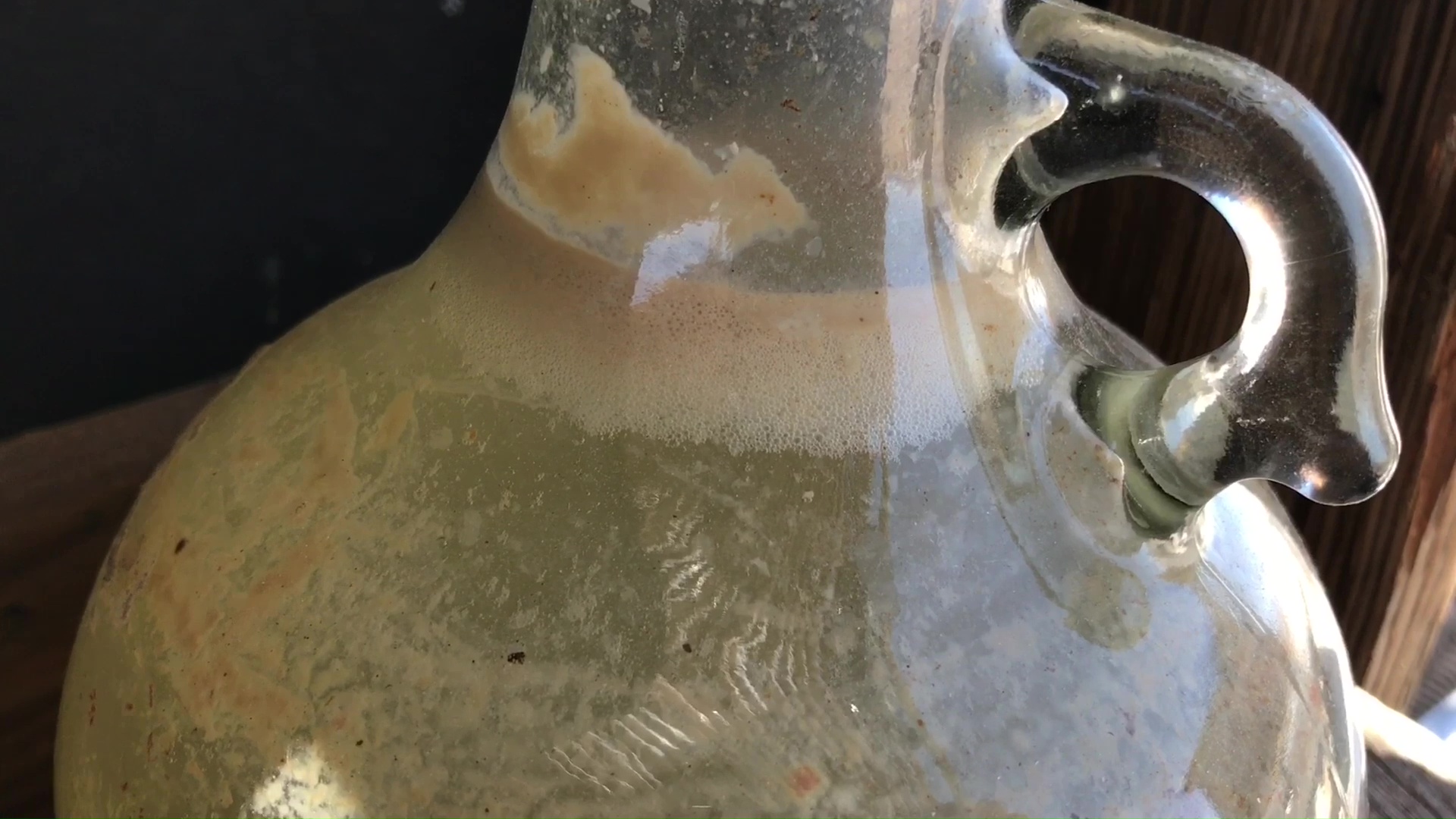
06 Honey Mead Wine Fermenting After Rice Wine Yeast Ferment Transplant
Sustaining Permanent Home Brew Wine Fermentation Yeast Starter Culture From Rice Wine To Honey Mead
I've had some luck over my several years of dedicated wine and mead home brewing with the process of maintaining a rotating yeast starter culture. So far it has been very dependent on the time of year. While I've not yet been in a climate so cold that the yeast packets won't work at all, they're definitely much slower in the winter. I'll even put my glass fermentation jugs in the sun in winter to give them some extra heat. Usually I'll get a batch of honey wine mead in no more than 2 weeks in the winter, but it can be as quick as 2 days in the summer. The fermentation yeast are really sensitive to the temperature. That can be good and bad. It's bad in the cold seasons if they take a long time to ferment the brew which can sometimes lead to problems with the flavor, as long as the extra patience that's needed to wait from them to be done. It's bad in the hot seasons if they ferment so fast that they overflow and make a mess.
I've found ways to adapt to all seasons, however the most difficult thing has been to sustain a consistent home grown alcohol fermentation yeast starter culture. Ideally I'd become profificient at this so that I could be free of having to purchase and import yeast packets. Sometimes they seem to expire and not work well if at all. That's always a risk and I can't store them in the most ideal conditions out here. They're not that expensive so I don't mind much stocking up on them. Though I'm always looking for ways to become fully self-sufficient.
What's worked well for me so far has been having several jars brewing at once at different stages so I always have some ready to drink, and others in stages where I can use the actively fermenting solution to kick start another batch. During the stage where it's almost a rolling boil effect, though it's cool or warm, that's when there's so much yeast activitity that you can pour some of the brew into a new batch and the process will continue without requiring a new yeast packet. This has helped me save on my packet supply quit a bit. However, this process can be tricky when it's cold out and the yeast seem to be less easily transplanted and kept active. Or the balance of my intake, storage containers, etc. makes it so the candle flame burns out before I'm ready for a new batch so to speak. I've had to try to balance these factors though it hasn't really been successfully habituated.
I was most successful at this sort of light a candle with a lit candle effect when I was experimenting with fermenting raisins. It was through this process that I learned and realized that make honey mead wine results in a very fast and complete yeast growth and death cycle. They eat through the sugars so fast because it's already in a liquid form. This was the same with making my own ciders from fruit juice. You don't have much margin for error to catch and transfer the active yeast. What was different about the raisins is that they were a dried whole food product, it took the yeast a lot longer to cycle though it. That meant that there was active yeast kind of smoldering in the fermentation jar for a long time. It was that success that I've built on with my new experiment of fermenting rice wine and using the smoldering yeast populations to light the candle of my honey mead batches without the need for using packets.
I soon noticed that rice wine fermentation jars were growing a thin yeast layer at the top of the water line. It wasn't moldy and distasteful like on a salt brine water surface. It's actually a much finery, silkier kind of yeast layer. I wasn't certain if it was a growth that was emergent from the rice itself, or if it was a characteristic of the yeast I had introduced. I'm not an expert, I just go with my gut and the smell test with wines and brines.
I wasn't sure if this floating yeast layer would effectively kick start a fresh batch of mead, but I had to try so there are the photos from the process of culturing yeast at the top of the rice wine fermentation jars, then scooping some out to attempt to start a fermentation process in a fresh batch of honey mead wine. While it took a few more days to really start rolling, it only took one warmer day for 2 separate experimental mead batches to really get rolling. One of them has already had all of the honey dissolved in to the solution from the yeast activity. I can smell the alcohol and they look and smell very healthy, the yeast is dancing about as normal.
If my luck holds, the slow fermenting rice could possibly sustain a permanent yeast culture that I'll be rotating through at a much slower rate than the mead batches, hence, I should always be able to kick start mead with rice wine hereafter.